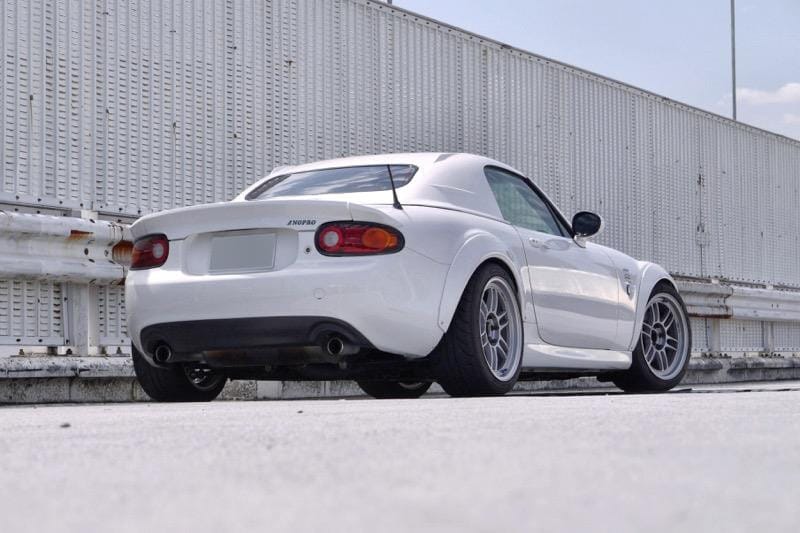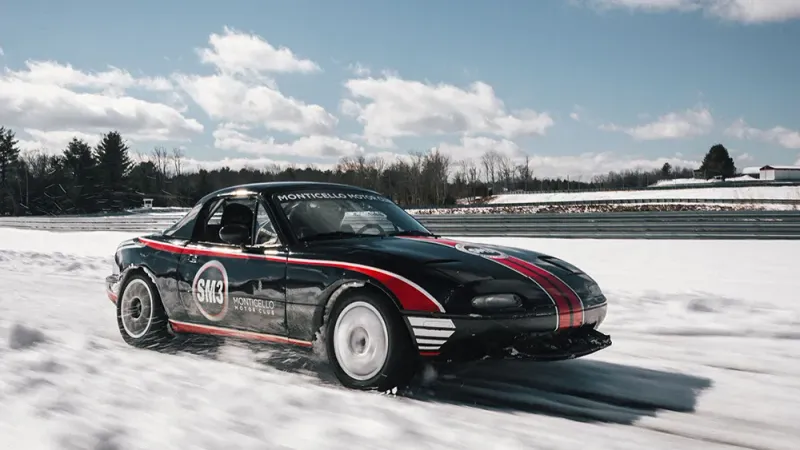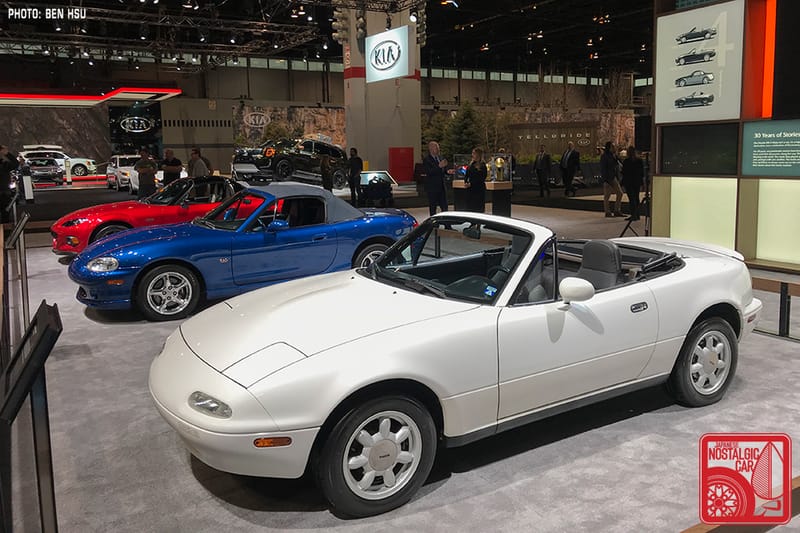The Evolution of Miata Safety Features
When the Miata debuted in 1990, U.S. safety rules (FMVSS 208) required passive restraints. Mazda’s solution was motorized shoulder belts paired with manual lap belts, a common stop-gap of the era.
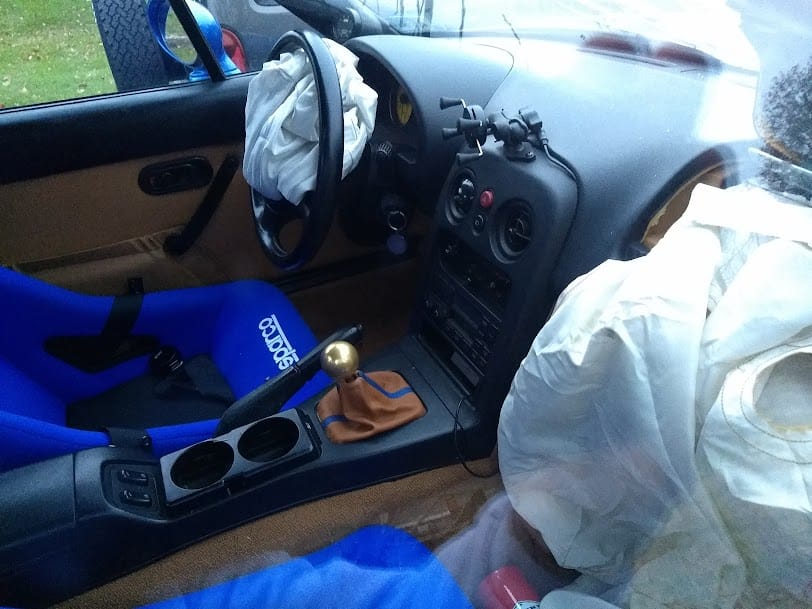
When the Miata hit the U.S. for 1990, it had to satisfy the “passive restraint” rule in FMVSS 208. Like a lot of early-’90s cars, Mazda used motorized automatic shoulder belts while you still latched the lap belt by hand. It was the stop-gap many brands used before dual airbags became the norm a few years later.
NA (1990–1997): From motorized belts to dual airbags
ABS enters the Miata ecosystem early. By 1991, U.S. brochures show anti-lock brakes available as an option, and that continued at least through 1993, useful context if you’re shopping first-gen cars.

Model-year 1994 is the big mid-cycle safety update. The Miata switches to dual front airbags and conventional three-point belts, retiring the motorized-shoulder setup. Mazda’s 1994 service literature has a full SRS section, underscoring how substantial that change was. ABS availability carries on depending on trim and market through 1997.
The NA’s arc mirrors the U.S. rulebook of the time, first comply with the passive-restraint mandate using automatic belts, then move to airbags mid-’90s.
NB (1999–2005): Tuning the fundamentals
The second-gen Miata keeps dual front airbags and, again, offers ABS depending on trim and region. In several markets Mazda also pairs ABS with Electronic Brakeforce Distribution, which more intelligently shifts braking effort front to rear. Owner literature from this era shows seat-belt pretensioners and load limiters entering the mix, small hardware that tightens belts early in a crash, then eases webbing slightly to reduce chest loads. The NB is evolutionary rather than revolutionary, but these pieces set the table for the NC’s big leap.

NC (2006–2015): The modern-safety leap
The third-gen NC is where Miata safety goes comprehensive. You get front airbags with a passenger-airbag deactivation indicator, seat-mounted side airbags, and seat-belt pretensioners with load limiters right from the start. ABS with EBD is now table stakes, and electronic stability control with traction control joins the party, bundled by trims at first, then increasingly common as the years roll. Compared with NA/NB, NC brings proper side-impact protection, modern belt tech, and the electronic safety net most buyers expect, without dulling the car’s basic feel.
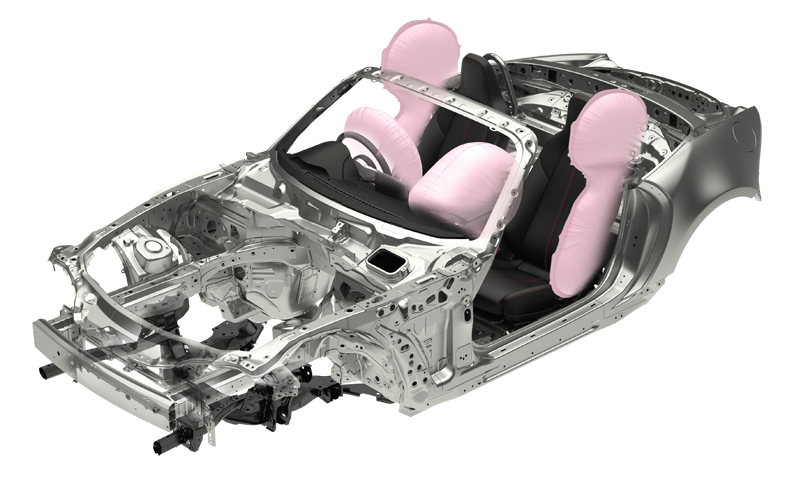
ND (2016–present): Light, stiff, and electronically aware
The ND shrinks and lightens the body while leaning on high-tensile steels and smart structure to keep crash performance up. From launch, many markets could spec Mazda i-Activsense features like Blind Spot Monitoring, Rear Cross-Traffic Alert, Lane Departure Warning, and High Beam Control/Adaptive Front Lighting depending on trim. Independent testing backs it up: Euro NCAP rated the ND four stars overall in 2015 and praised its pedestrian protection thanks to an energy-absorbing/deployable hood, while ANCAP later awarded five stars under its own protocol.
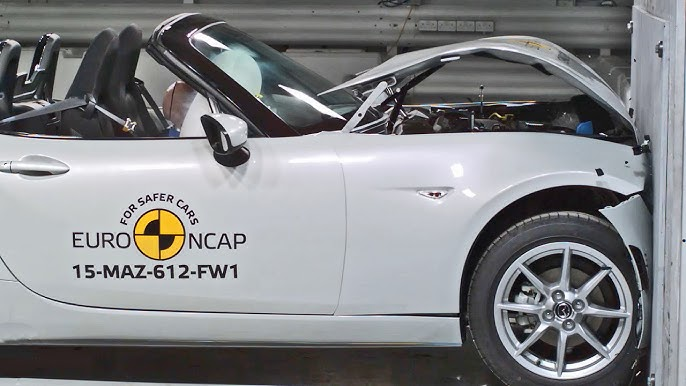
A quick regulatory note explains a common question: the federal rear-visibility rule (FMVSS 111) took full effect for vehicles built on or after May 1, 2018, which is why rearview cameras are standard on 2019 U.S. MX-5s.
For 2019 (ND2), Mazda expanded i-Activsense with Smart City Brake Support (low-speed AEB) and Traffic Sign Recognition, depending on package and trim. In 2022, the ND introduced Kinematic Posture Control, a software trick that subtly pinches the inside-rear brake in high-g cornering to settle the car’s posture without adding hardware or weight. KPC is standard from 2022 onward, and later refreshes add calibration polish plus DSC-Track on certain manual-trans trims.
2024–2025: Recalls worth a look
Late 2024 brought a non-compliance recall for airbag control module software that could choose an improper deployment level in certain minor crashes, covering 2016–2023 cars. In May 2025, another non-compliance recall noted that some 2024–2025 cars might not illuminate the TCS/DSC indicator when abnormal yaw is detected, addressed with instrument-cluster/DSC software updates. Both actions were software-only, with no injuries reported. Owners can confirm status by checking their VIN with Mazda or NHTSA.
What the crash programs said about ND
Euro NCAP scored the ND four stars overall in 2015 with standout pedestrian protection, thanks to that energy-absorbing hood. ANCAP awarded five stars under its test regime, noting dual front and side airbags plus seat-belt reminders. The difference in stars comes down to protocol differences, not a different car.
Quick at-a-glance progression (U.S. focus)
1990–1993: Motorized automatic shoulder belts to satisfy the passive-restraint era; ABS optional from 1991.
1994–1997: Dual front airbags with conventional three-point belts; ABS availability continues.
1999–2005 (NB): Dual airbags; wider ABS/EBD fitment by market; pretensioners and load limiters.
2006–2015 (NC): Side airbags, pretensioners/load limiters, ABS/EBD, and DSC/TCS introduced and then widely available.
2016–2018 (ND1): Lighter, stronger body; i-Activsense availability (BSM, RCTA, LDW, AFS/HBC).
2019–2021 (ND2): Rear camera standard via FMVSS 111; adds low-speed AEB and Traffic Sign Recognition by trim.
2022–present (ND2.5/ND3): KPC standard; continuing i-Activsense and ESC refinements, including DSC-Track on some manuals.


